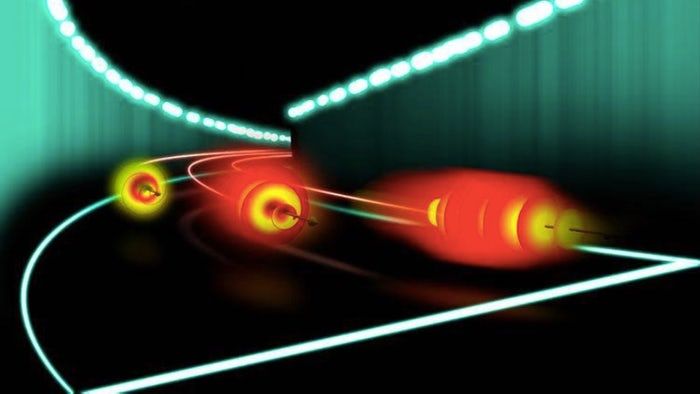Page 10782
Mar 29, 2016
Will capitalism survive the robot revolution?
Posted by Zoltan Istvan in categories: economics, employment, finance, robotics/AI
My new article for TechCrunch on capitalism and the robot revolution:
Economic experts are trying to figure out a question that just two decades ago seemed ridiculous: If 90 percent of human jobs are replaced by robots in the next 50 years — something now considered plausible — is capitalism still the ideal economic system to champion? No one is certain about the answer, but the question is making everyone nervous — and forcing people to dig deep inside themselves to discover the kind of future they want.
After America beat Russia in the Cold War, most of the world generally considered capitalism to be the hands-down best system on which to base economies and democracies. For decades, few doubted capitalism’s merit, which was made stronger by thriving globalization and a skyrocketing world net worth. In 1989 — when the Berlin Wall fell — the world had only 198 billionaires. Now, according to Forbes, there are 1,826 of them in 2016.
Continue reading “Will capitalism survive the robot revolution?” »
Mar 29, 2016
Something Just Slammed Into Jupiter
Posted by Sean Brazell in categories: asteroid/comet impacts, existential risks
Astronomers have captured video evidence of a collision between Jupiter and a small celestial object, likely a comet or asteroid. Though it looks like a small blip of light, the resulting explosion was unusually powerful.
As Phil Plait of Bad Astronomy reports, the collision occurred on March 17, but confirmation of the event only emerged this week. An amateur Austrian astronomer used a 20-centimeter telescope to chronicle the unexpected event, but it could’ve been some kind of visual artifact.
Mar 29, 2016
Flyby Comet Was WAY Bigger Than Thought
Posted by Sean Brazell in categories: asteroid/comet impacts, existential risks
Oh, joy. I hope it doesn’t take an actual catastrophe before the world comes together to get all of our eggs out of this one basket.
Comet P/2016 BA14 was initially thought to be a cosmic lightweight, but as it flew past Earth on March 22, NASA pinged it with radar to reveal just what a heavyweight it really is.
Mar 29, 2016
Magic Microbes: The Navy’s Next Defense?
Posted by Klaus Baldauf in categories: bioengineering, biotech/medical, computing, materials, nanotechnology, neuroscience, robotics/AI

Synthetic biology involves creating or re-engineering microbes or other organisms to perform specific tasks, like fighting obesity, monitoring chemical threats or creating biofuels. Essentially, biologists program single-celled organisms like bacteria and yeast much the same way one would program and control a robot.
But 10 years ago, it was extremely challenging to take a DNA sequence designed on a computer and turn it into a polymer that could implement its task in a specific host, say a mouse or human cell. Now, thanks to a multitude of innovations across computing, engineering, biology and other fields, researchers can type out any DNA sequence they want, email it to a synthesis company, and receive their completed DNA construct in a week. You can build entire chromosomes and entire genomes of bacteria in this way.
Continue reading “Magic Microbes: The Navy’s Next Defense?” »
Mar 29, 2016
Twisting puts the brakes on light in a vacuum
Posted by Andreas Matt in categories: computing, quantum physics
A team of researchers at the University of Ottawa has discovered that twisted light moves slower than the speed of light in a vacuum set by Einstein’s theory of relativity, with major implications for the development of quantum computing and communications.
Mar 29, 2016
Multiple bends won’t crack this lightweight, paper-like, flexible ceramic
Posted by Klaus Baldauf in categories: electronics, materials, wearables

A flexible, paper-like ceramic material has been created that promises to provide an inexpensive, fireproof, non-conductive base for a whole range of new and innovative electronic devices (Credit: Eurakite). View gallery (4 images)
Materials to make hard-wearing, bendable non-conducting substrates for wearables and other flexible electronics are essential for the next generation of integrated devices. In this vein, researchers at the University of Twente have reformulated ceramic materials so that they have the flexibility of paper and the lightness of a polymer, but still retain exceptional high-temperature resistance. The new material has been dubbed flexiramics.
Continue reading “Multiple bends won’t crack this lightweight, paper-like, flexible ceramic” »
“The Colorware Retro iMac blends the fun, nostalgic look of the Apple IIe with the technology of a 27-inch Retina iMac.”
Tag: Apple
Mar 29, 2016
Why You Should Care About Nukes
Posted by Gerard Bain in categories: media & arts, military, physics

For info about divesting from nuclear weapons companies, go to http://responsibleinvest.org/
Thanks to the Future of Life Institute for helping support this video http://www.futureoflife.org (in particular, thanks to Max Tegmark for guest narrating and Meia Chita-Tegmark for her feedback)
Mar 29, 2016
Neuromorphic supercomputer has 16 million neurons
Posted by Klaus Baldauf in categories: information science, neuroscience, robotics/AI, supercomputing
Today, Lawrence Livermore National Lab (LLNL) and IBM announced the development of a new Scale-up Synaptic Supercomputer (NS16e) that highly integrates 16 TrueNorth Chips in a 4×4 array to deliver 16 million neurons and 256 million synapses. LLNL will also receive an end-to-end software ecosystem that consists of a simulator; a programming language; an integrated programming environment; a library of algorithms as well as applications; firmware; tools for composing neural networks for deep learning; a teaching curriculum; and cloud enablement.
The $1 million computer has 16 IBM microprocessors designed to mimic the way the brain works.
IBM says it will be five to seven years before TrueNorth sees widespread commercial use, but the Lawrence Livermore test is a big step in that direction.
Continue reading “Neuromorphic supercomputer has 16 million neurons” »















